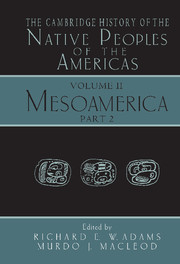
- Cited by 2
-
Cited byCrossref Citations
This Book has been cited by the following publications. This list is generated based on data provided by Crossref.
Trigger, Bruce G. 2003. Understanding Early Civilizations.
Diamond, Jared and Bellwood, Peter 2003. Farmers and Their Languages: The First Expansions. Science, Vol. 300, Issue. 5619, p. 597.
- Publisher:
- Cambridge University Press
- Online publication date:
- March 2008
- Print publication year:
- 2000
- Online ISBN:
- 9781139053464


